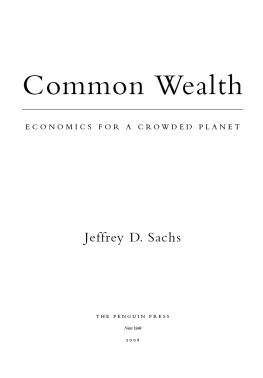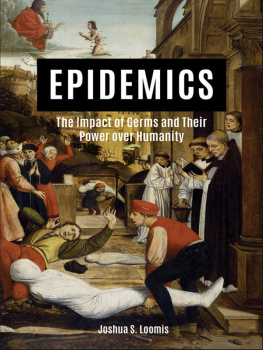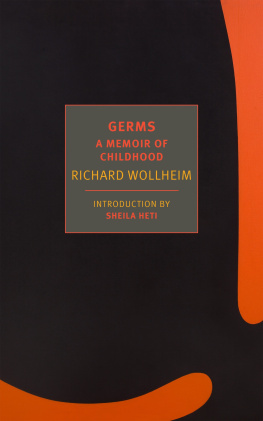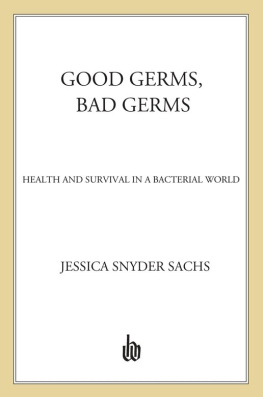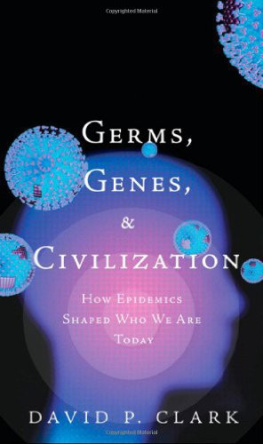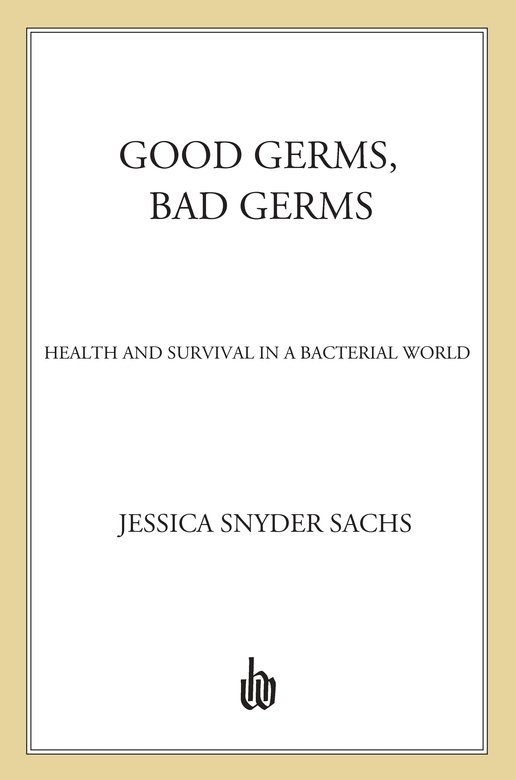While every book is a collaboration, this is particularly true of the collection of words in your hands. I can only begin to thank the scores of scientists, reference librarians, and colleagues who graciously submitted to my questions, requests for information, and early drafts. This book was also made possible by several generous grants and fellowships.
A directors grant from the Alfred P. Sloan Foundation enabled me to deepen and rigorously fact-check my research, as well as bring on board an impressive team of scientific advisers. First and foremost of these has been Abigail Salyers, professor of microbiology at the University of Illinois, former president of the American Society for Microbiology, and a prolific and engaging author and science communicator. In addition to Abigails bow-to-stern advisement, several chapters of this book have benefited from the vetting of Harvard immunologist Dale Umetsu, Columbia University microbiologist Aaron Mitchell, and pathologist Frank Lowy, of Columbias College of Physicians and Surgeons. Special thanks to Sloan Foundation program director Doron Weber, who saw this projects potential.
Thanks go also to the Fund for Investigative Journalism for the tremendous boost of its 2005 Book Prize, and to the Alicia Patterson Foundation for the 2005 fellowship that got this book off the ground with a series of feature stories for the APF Reporter . FIJ executive director John Hyde and APF executive director Margaret Engel infused their organizations financial support with their personal encouragement.
On the literary side, my work has greatly benefited from a squad of mentors and editors. The book proposal was born during a career-invigorating five months in Sam Freedmans rightly famous book-writing seminar at Columbia Journalism School. My agent, Regula Noetzli, ensured that the proposal reached the right hands: those of Joe Wisnovsky, my able editor at Hill and Wang and a wise soul whose perspective has kept me sane these last two years. Marguerite Holloway, my masters thesis adviser at Columbia, went far beyond her professorial obligations to help shape several core chapters of this book. Longtime Parenting magazine editor Maura Rhodes bravely launched her freelance editing career by helping me with this daunting project. And Im forever in the debt of my two wonderful sisters-in-law, Sharin Sachs and Cathy Snyder, both of whom improved this book with their careful reading and feedback.
It is no understatement to say that this book would not have been possible without the research assistance of Neil Silvera of Columbias Biological Sciences Library. Thanks, Neil!
Special thanks also to evolutionary cell biologist Lynn Margulis, of the University of Massachusetts, Amherst, whose too-brief mention in this book belies her importance to our understanding of all cells prokaryotic and eukaryotic. I will forever cherish the time I spent with Lynn during the researching of this book.
Last but never least, my husband, Gary, and daughter, Eva, sustained this effort with their love, patience, and unflagging moral support.
EMBRACING THE MICROBIOME
Since the dawn of civilization, the demon of pestilence has been a part of our lives and fears. Sanitation and antibiotics gave us our first powerful weapons against this great foe. But we have wielded them crudely, without appreciation either for the role that bacteria play in maintaining our health or for their infinite capacity to adapt to whatever poisons we throw at them. Though glimmers of understanding go back as far as Pasteurand his conviction that life without germs would be impossibleefforts to distinguish the good guys from the bad were largely lost in the exultation of microbe hunting and the apparent conquest of one disease-causing foe after another.
The rapid rise of drug-resistant superbugs has been our rude awakening. From an evolutionary point of view, the bacteria have always had the advantage, says Joshua Lederberg, the Nobel laureate who with his former wife, Esther, unfolded the mechanisms of what he now calls the world wide web of microbial gene exchange. Bacteria can multiply and evolve a million times more rapidly than we can, he notes. They dont quibble about who belongs to what species when it comes to swapping the genes they need to thwart our antibiotics and, if its in their interest, to wipe us out.
So why havent they?
They need us, just as surely as we need them, says Lederberg. The bug that kills its host is at a dead end. Admittedly, we continue to encourage the rise of such rogue microbes by giving them new ways to jump to new hosts faster than they waste the old ones. Thanks to the quirks of modern food distribution, for example, a deadly microbe like E. coli 0157:H7 can now spread from a single contaminated farm field to dinner plates across an entire continent in a day.
More than ever, perhaps, we need to keep the living armor of our microflora firmly in place. Ironically, a new popular awareness of these,our most intimate associates, has come from headlines associating gut bacteria with obesity. Hopefully, people dont come away from such media reports with the idea that fatness is something to cure with antibiotics, but instead gain an appreciation that our gut bacteria have always functioned as a vital digestive organ (with some species being more efficient at calorie extraction than others).
It would broaden our horizons if we started thinking of a human as more than a single organism, Lederberg elaborates. It is a superorganism that includes much more than our human cells. Lederberg calls this cohabitation of human and microbial cells the microbiome as he urges a new generation of microbiologists to further our understanding of how it unites two vastly different kingdoms of life into an integrated whole. Ive never said we should never kill a bug, Lederberg quickly adds. After all, the bug doesnt have a dictum to never kill a person, even if its sealing its own doom. Whats important is that were better off aspiring to a relationship of symbiotic coexistence.
In this context, the treatment of infectious disease becomes less a war on an invisible enemy than a restoration of balancesometimes fixing the host, as when the immune system becomes overly aggressive or neglectful of its duty to keep each microbe in its place; other times bolstering our microfloras ability to perform its many vital functionsdigestion, the rebuffing of pathogens, and the taming of inflammation being the most obvious. Are we ready for such a revolutionary new way of viewing human biology? It may well hold the key to our continued health and survival in what always has been, and always will be, a bacterial world.




